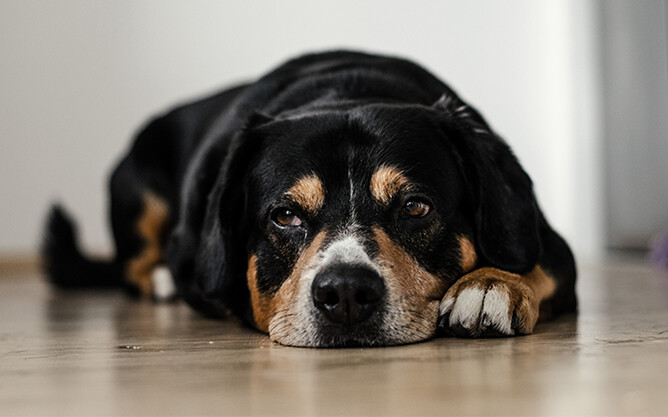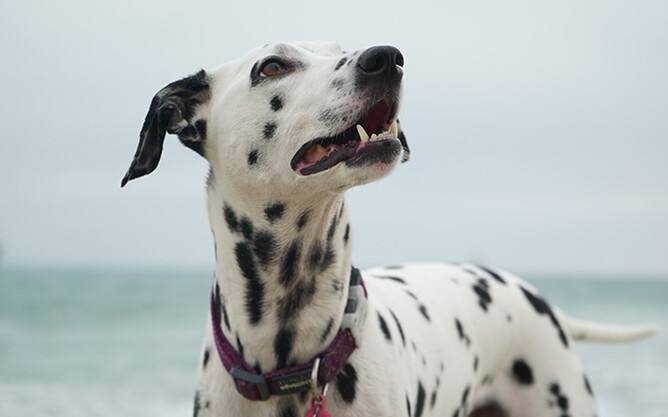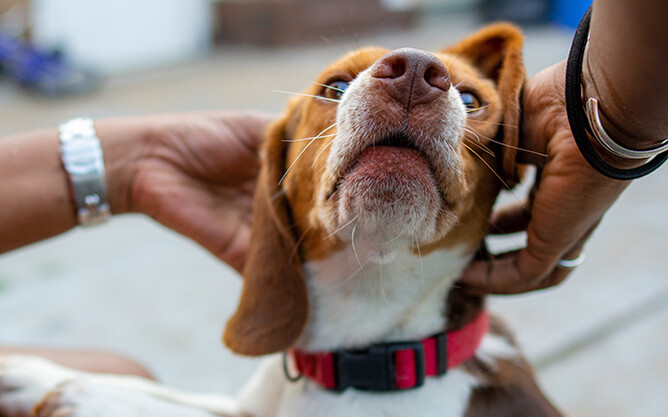You’re coming back from your first day back at work, gosh it felt good to be out and about again for a full long day.
You picked up the kids on the way home, and now – ready to get stuck into making some dinner and relaxing in front of the TV – you open the door … to find a hurricane has hit your living room.
There’s wee on the kitchen floor, the remains of a cushion scattered like debris across the living room, ornaments knocked off the bookshelf, and drool EVERYWHERE.
Your dog rushes into your arms like a soldier returning from war, showering you with affection, seemingly oblivious to the destruction left behind.
He’s a well-trained, good boy and acts the perfect angel when you’re home. So what happened?
It’s possible that your dog has had an episode of separation anxiety, which is often characterised by extreme stress and destructive behaviour when they’re left alone. Separation anxiety in dogs can be stressful on both pet and owner, but there are ways to manage it.
Learn to identify the signs and causes of general vs separation anxiety in dogs, and calming treatments to help relieve their symptoms. Keep your house intact and your dog in check with our anxiety relief tips, tricks and tools.
How do I tell if my dog is anxious?
There are several signs of anxiety in dogs, many of which can be easily mistaken for other problems, especially in puppies. Weeing on the carpet, whining and chewing furniture may be typical puppy behaviours, but when it occurs after your dog is grown and trained, then it becomes a cause for concern.
General anxiety in dogs, triggered by loud noises (think: fireworks), environmental changes (think: moving house), and trauma (think: rescue dogs), can manifest in a number of ways:
- Whining or whimpering
- Pacing and inability to sit still or relax
- Trembling and fidgeting
- Attempting to escape
- Hiding and avoiding interaction
With general anxiety, many of your dog’s symptoms will display with you present, making it easy to see when something is wrong. But the trouble with recognising separation anxiety, and the key to telling it apart from general bad behaviour, is that the dog primarily expresses his anxiety when you’re not around to see it.
Signs of separation anxiety in dogs include:
- Weeing or pooing in the house while you’re out (despite being housetrained)
- Chewing on furniture, destructive behaviour when you’re away
- Howling or whining excessively while you’re out (the neighbours might report it!)
- Digging at carpets and scratching at doors when you’re away
- Drooling more than usual
- Obsessive pacing
Why is my dog anxious?
Some dogs are more prone to anxiety than others, and need a little more care so as not to trigger a problem. Anxiety-prone dogs include German Shepherds, Labrador Retrievers, Border Collies, Shorthair Pointers, Cocker Spaniels, Bichon Frises, King Charles Spaniels, Greyhounds, and many toy breeds.
General anxiety in dogs can be caused by a range of factors, including fireworks, thunderstorms, moving house, the addition of a new pet or person to the household, or past trauma in the case of rescue dogs.
For the purposes of this article, we want to focus on separation anxiety — when your dog becomes stressed or bored in your absence and takes it out on himself or your house, as described above.
Separation anxiety is usually triggered by being alone when he’s used to being with people — such as the first day back at work/school after a holiday, or when he’s used to being with certain people — such as in a change of ownership, or loss of a family member.
As much as you’d love to take him to work with you, or stay and work from home (maybe you are at the moment, but you’ll have to go back sometime), this isn’t always practical. In that case, you need to find a way to break the cycle of anxiety and help them find their calm again.
How can I break the separation anxiety spiral?
When your dog gets really worked up over an issue, especially the departure of his favourite person (that’s you), he can be easily overcome with anxiety and enter into a ‘panic spiral’:
“Where are they going?! What will I do?! This is the worst! They’re leaving me! What will I do?!”
You need to stop this spiral in its tracks before it gets worse.
One of the best ways to do this is with distraction.
Try giving them a puzzle toy filled with a treat like peanut butter as you leave. This can be enough to distract them as you leave the house, and stop the panic spiral from beginning in the first place.
Make your departure a non-event.
Don’t make a big show of leaving, try to avoid making a fuss over saying goodbye to your dog, and don’t jingle your keys or make a loud noise to announce your departure. This helps your dog to understand that your departure and absence isn’t a big drama, and calm your dog down.
Leave him some comfort and entertainment.
Puzzle toys, his favourite teddy, and an old shirt of yours can be good to leave for your dog while you’re out, so he’s got comfort and entertainment to keep him calm and away from your furniture. Make sure he’s got a “safe zone” he can go to during the day, where he can feel comforted and relaxed.
Recommended toys for anxious dogs
There are a huge variety of toys and tools available to help treat anxiety in dogs. At Nose To Tail, we’ve got a range of products for your pup, from large to small, young to old.
Some of our favourites include the Snoop, Lickimat, and K9 Connectables — get in touch today to ask for more detail and order yours!




